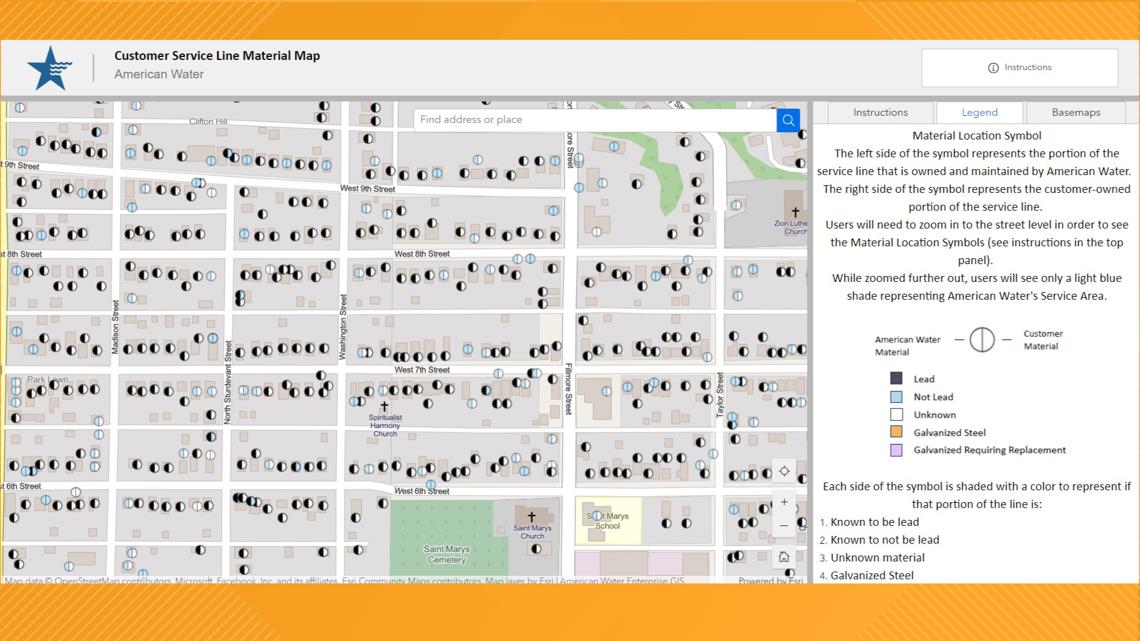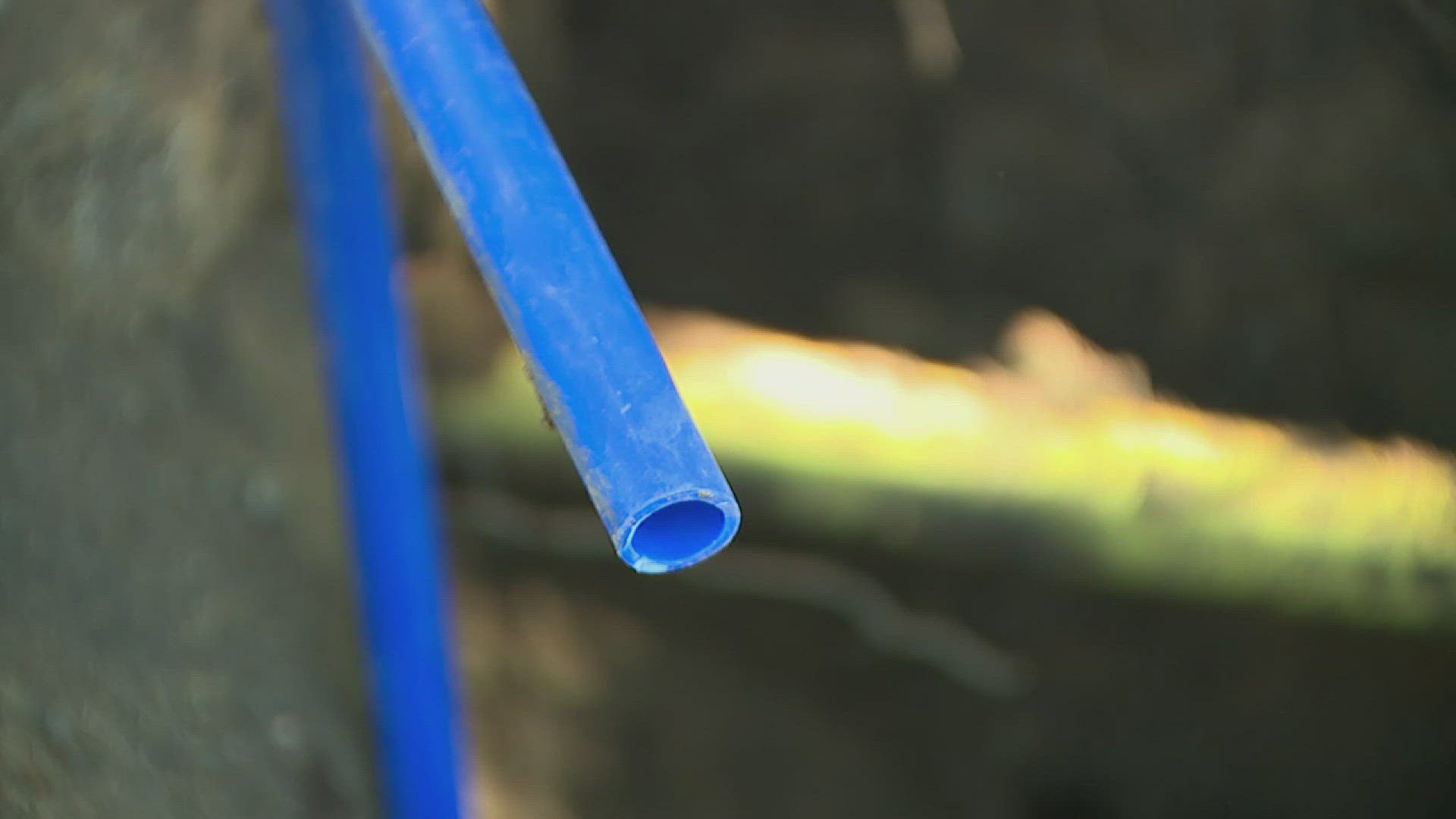DAVENPORT, Iowa — Iowa American Water has a new way to check what your service lines are made of.
Those underground pipes carry water from water mains to buildings, but many homes built before the late 1980s have lead service lines. While they don't pose an immediate threat, the Environmental Protection Agency is requiring these pipes to be identified and replaced.
"It's anticipated that all lead service lines will need to be replaced within 13 years, and that is an EPA directive," Iowa American Water Director of Engineering Scott Hinton said.
On the Iowa side of the Quad Cities, Iowa American Water has taken on the task of replacing thousands of lead service lines. But in many cases, the company doesn't know what the pipes connected to customers' homes are made of.
That's where the new service line material map comes in. Each circle represents an Iowa American connection.


"In certain areas here you see the black, that is where our records indicate that a portion of that line is made of lead, and there's a portion of it that's unknown," Iowa American Water Vice President of Operations Laura Runkle said.
Runkle said that by using the map, customers can help build the utility's lead service line inventory. Just enter your address, and if part of the circle is white, click on the survey link.
All Iowa American customers can use the map, not just those in the Iowa Quad Cities.
"The big tell-tale sign if you have a lead service line, is this bulb in the pipe that comes. This will be the pipe that comes in through your basement wall or your basement floor, and connects to your meter," Hinson said.
Another option to find out what your line is made of is by scratching it with a coin or a key. If it's silver and shiny, it's lead.
Once Iowa American Water knows where the lead service lines are, they're added to the list for replacement. Homes on Third and Fourth Streets in Davenport are currently having their lines replaced. Approximately 1,000 lines have already been taken care of, but if you're still waiting your turn, don't panic. They've also been treating the water to prevent lead absorption for more than 25 years.
"So even if you have lead pipes, It's not an emergency that you need to have them replaced right away," Hinson said. "But long term we do want to replace all of them, we are required to replace all of them, so our plan is to do so."
Iowa American Waters said there are no concerns about elevated lead levels in the Quad Cities system. According to their 2023 water quality report, none of the sampled tap water had more than one part per billion. The action level is 15 parts per billion.
If you'd like to take extra precautions, the EPA recommends running your faucets for 30 seconds to two minutes after the water hasn't been turned on for more than six hours. You can also use a filter certified to remove lead for drinking and cooking water.

